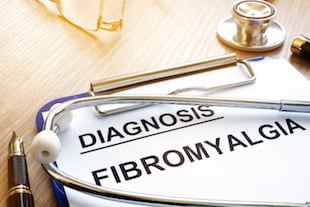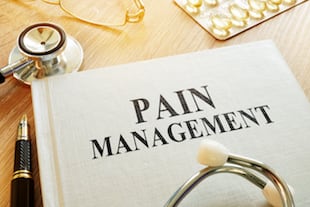Types of Pain
Back Pain
Common sources of back pain

A tear in the back muscles and ligaments may predispose the discs to bulge or herniate.
Bulging and herniated disc: The gel-like material within the disc can bulge or rupture. It creates irritation, pain and swelling when this material squeezes out and comes in contact with a spinal nerve.
Pinched nerve: When a spinal nerve is compressed, pain may shoot down your hip or leg into your feet. It is called radiculopathy or sciatica.
Osteoarthritis or Degenerative Disc Disease: As discs naturally wear out, bone spurs may form and the facet joints may inflame. The discs sometimes dry out and shrink, losing their flexibility and cushioning properties. The disc spaces get narrower. These changes can lead to stenosis or disc herniation.
Spinal Stenosis: If discs bulge or protrude, and facet joints enlarge, the spinal canal gets narrower. It compresses the spinal cord and the nerves, causing them to swell and inflame.
Spondylolysis: A weakness or stress fracture develops in one of the bony bridges that connect the upper and lower facet joints.
Axial vs. Radicular Back Pain

Radicular pain is caused by irritation or injury of a spinal nerve (as a result of foraminal narrowing, disc herniation, arthritis, infection and/or inflammation). It is usually perceived as a shooting, numbing or tingling sensation in the arms or legs.
Axial pain, on the other hand, is not accompanied by any such sensations in the extremities. Axial pain is more confined to one body area. In the cervical spine it radiates along the back of the shoulders, or towards the shoulder blades, or into the back of the scalp (sometimes causing occipital headaches). In the lower back it is referred around into the groin, pelvis, buttocks or upper thigh.
Axial pain may be caused by a damaged disc when there’s no bulging of the disk (such as radial annular disc tear.)
In some patients, both Radicular and Axial symptoms may occur simultaneously.
Headaches
Cluster headache
Cluster headache is believed to be worse than migraine headache. These headaches are intense and can last for 30 minutes to one hour. Cluster headaches happen most often during the morning or late at night. Chronic smokers and those who drink alcohol are the most common sufferers of cluster headaches. The pain is concentrated on one side, usually behind an eye. Cluster headache can be episodic or chronic. Chronic attacks occur less than a month apart. Episodic – with at least 1 month of pain free period.
Treatment Options: Conservative treatment may includes medications, such as Verapamil and Oxygen inhalation. If conservative and Oxygen therapies are not effective, some interventional options such as radiofrequency ablation and occipital nerve stimulation may be used.
Cervicogenic Headache
Cervicogenic headache gets its name from its origin from the neck. Therer’s is a well known connection between the first three cervical nerve roots and the fifth cranial nerve in the cervical cord. So, we the muscle spasm or nerve root irritation in the neck can cause pain in and around the eye and in the face by means of this fifth nerve ( trigeminal nerve). The headache arising from the neck may also be associated with neck, shoulder, and arm pain.
Tension Headache
Most headaches are tension-type headaches. This is the most common type of headache. These headaches are felt as a pressure or aching of mild to moderate severity. It can be unilateral or bilateral and often occur in the back of the head, on the sides of the head, and around the eyes. These headaches are frequently caused by the muscles of the jaw and neck. The temporalis muscle may be involved in headaches along the side of the head. It is commonly described as a tight band/hat band around the head (that is caused by muscle tension). Muscle tension is commonly caused by trauma, repetitive strain, misaligned jaw or neck joints, poor posture, nerve impingements, or stress. Tension-type facial muscle headaches may be a trigger for migraine headaches and unlike migraines are usually made better with physical exertion. A tension headache may start after physical, mental, or emotional stress.
Drug Rebound Headache
Drug rebound headaches are those headaches that may be caused by the frequent use of pain medications. Aspirin, Tylenol and many other prescription medications are helpful to the occasional headache sufferer, but the overuse of these drugs can often make a headache worse.
